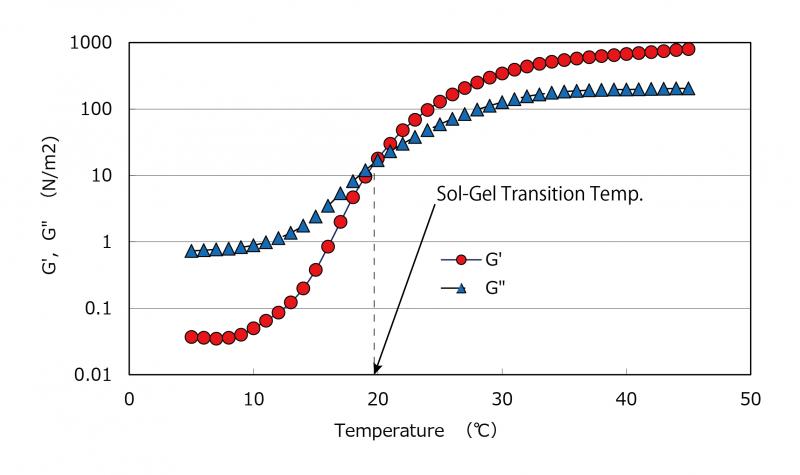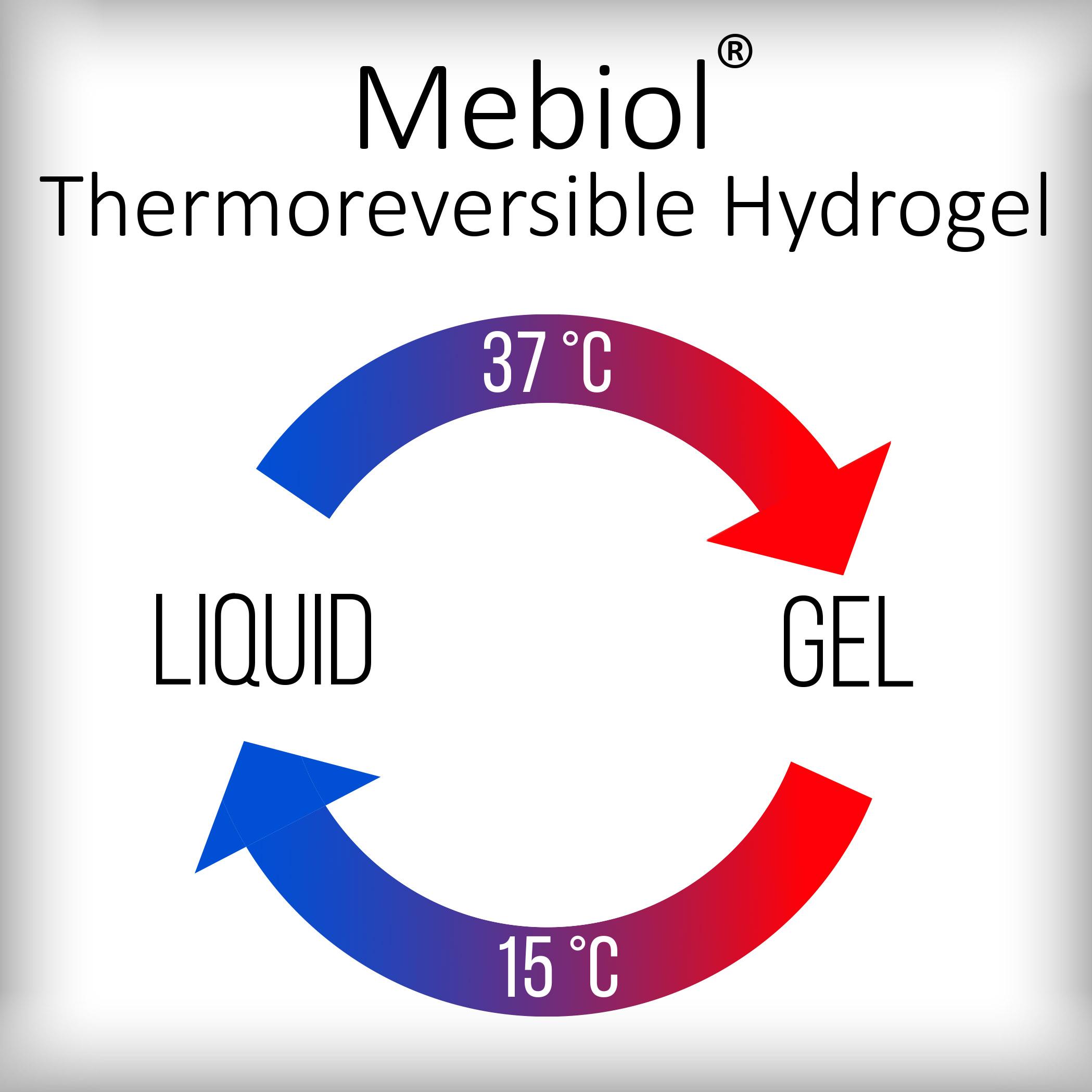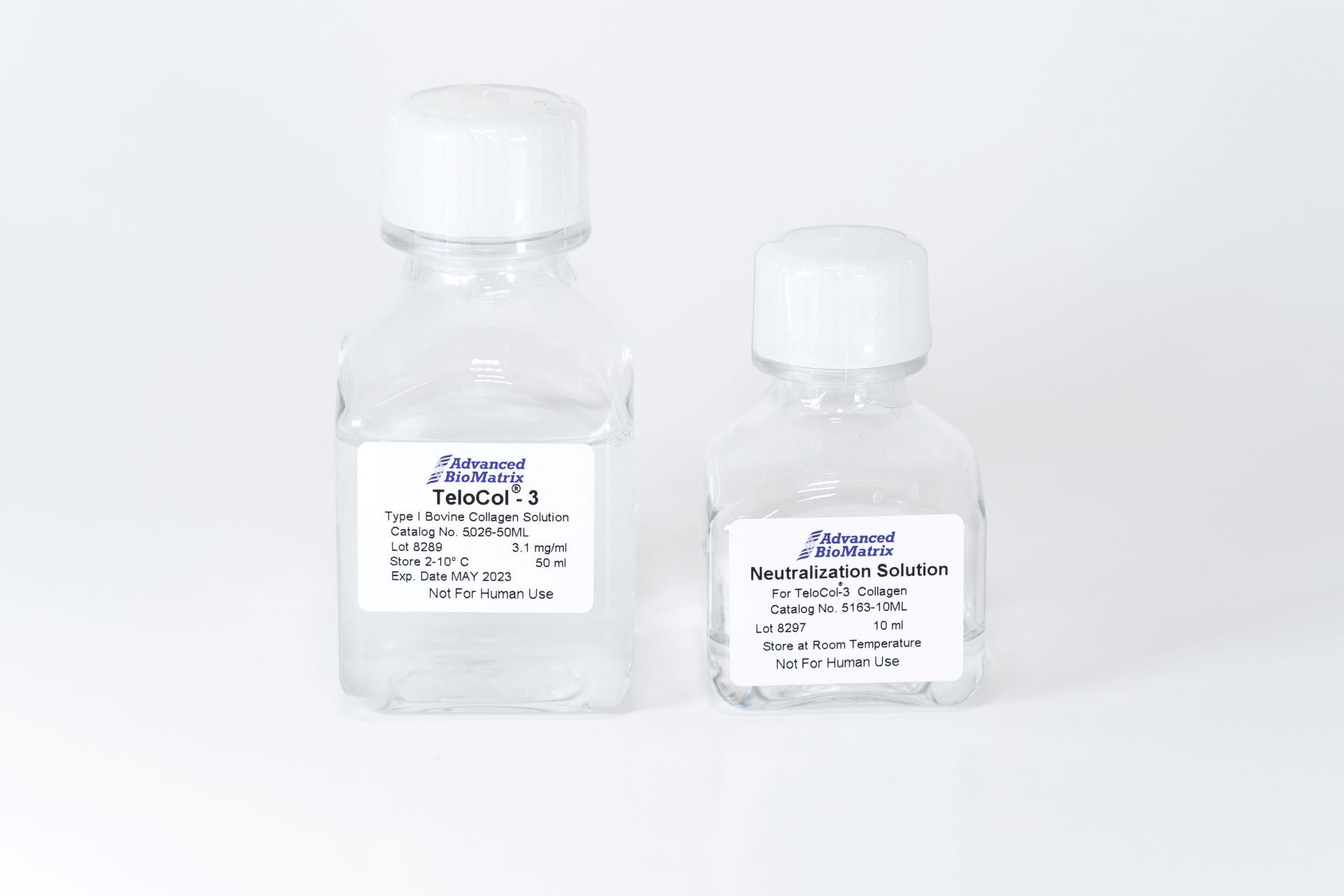-
Collagen
-
Type I - Atelocollagen
- PureCol® Solution, 3 mg/ml (bovine) #5005
- Nutragen® Solution, 6 mg/ml (bovine) #5010
- FibriCol® Solution, 10 mg/ml (bovine) #5133
- PureCol® EZ Gel, Solution, 5 mg/ml (bovine) #5074
- PureCol® Lyophilized, 15 mg (bovine) #5006
- VitroCol® Solution, 3 mg/ml (human) #5007
- VitroCol® Lyophilized, 15 mg (human) #5008
-
Type I - Telocollagen
- TeloCol®-3 Solution, 3 mg/ml (bovine) #5026
- TeloCol®-6 Solution, 6 mg/ml (bovine) #5225
- TeloCol®-10 Solution, 10 mg/ml (bovine) #5226
- RatCol™ for 2D and 3D, Solution, 4 mg/ml (rat) #5153
- RatCol™ High Concentration, Solution, 10 mg/ml (rat)
- RatCol™ lyophilized, 100 mg (rat)
- RatCol™ for Coatings, Solution, 4 mg/ml (rat) #5056
- Type I - Insoluble Collagen
- Type I - Bioinks
- Type II Collagen
- Type III Collagen
- Type IV Collagen
- Collagen Standard
-
PureCol® Collagen Coated Plates
- Collagen Coated T-25 Flasks #5029
- Collagen Coated 6-well Plates #5073
- Collagen Coated 12-well Plates #5439
- Collagen Coated 24-well Plates #5440
- Collagen Coated 48-well Plates #5181
- Collagen Coated 96-well Plates #5072
- Collagen Coated 384-well Plates #5380-5EA
- Collagen Coated 100 x 20 mm Dishes #5028
- MatTek Glass-Bottom Dishes
- MatTek Multi-Well Plates
- Collagen Scaffolds
- Collagen Hybridizing Peptides
-
Type I - Atelocollagen
- Tunable Stiffness
- CytoSoft™ Rigidity Plates
-
Bioprinting
- Support Slurry for FRESH Bioprinting
-
Bioinks for Extrusion Bioprinting
- Lifeink® 200 Collagen Bioink (35 mg/ml) #5278
- Lifeink® 220 Collagen Bioink (70 mg/ml) #5343
- Lifeink® 240 Acidic Collagen Bioink (35 mg/ml) #5267
- Lifeink® 260 Acidic Collagen Bioink (70 mg/ml) #5358
- GelMA Bioink
- GelMA A Bioink
- GelMA C Bioink
- Pluronic F-127 40% Sterile Solution
- GelMA 20% Sterile Solution
- Alginate 5% Sterile Solution
- Photoinitiators
- Bioinks for BIONOVA X
- Bioinks for Lumen X
- DLP Printing Consumables
-
Create Your Own Bioinks
- PhotoCol® Methacrylated Collagen
- PhotoGel® Methacrylated Gelatin 95% DS
- PhotoGel® Methacrylated Gelatin 50% DS
- PhotoHA®-Stiff Methacrylated Hyaluronic Acid
- PhotoHA®-Soft Methacrylated Hyaluronic Acid
- PhotoAlginate® Methacrylated Alginate
- PhotoDextran® Methacrylated Dextran
- PEGDA (Various Molecular Weights)
- Silk Fibroin, Solution
- PhotoSericin® Methacrylated Sericin
- Bioprinters
-
3D Hydrogels
- Thermoreversible Hydrogel
- Silk Fibroin
-
Type I Collagen for 3D Hydrogels
- PureCol® Solution, 3 mg/ml (bovine) #5005
- Nutragen® Solution, 6 mg/ml (bovine) #5010
- FibriCol® Solution, 10 mg/ml (bovine) #5133
- PureCol® EZ Gel, Solution, 5 mg/ml (bovine) #5074
- VitroCol® Solution, 3 mg/ml (human) #5007
- TeloCol®-3 Solution, 3 mg/ml (bovine) #5026
- TeloCol®-6 Solution, 6 mg/ml (bovine) #5225
- TeloCol®-10 Solution, 10 mg/ml (bovine) #5226
- RatCol® for 3D gels, Solution, 4 mg/ml (rat) #5153
- HyStem® Thiolated Hyaluronic Acid
- Methacrylated Collagen
- Methacrylated Gelatin
- Methacrylated Hyaluronic Acid
- Diacrylates
- Collagen Sponges
- Methacrylated Polysaccharides
- Spheroids and Organoids
- Extracellular Matrices
- HyStem / Hyaluronic Acid
-
Adhesion Peptides / Proteins
-
Recombinant Adhesion Proteins
- CD2, 0.5 mg/ml #5086
- CDH3, 0.5 mg/ml #5124
- CDH13, 0.5 mg/ml #5125
- CD14, 0.5 mg/ml #5089
- CDH18, 0.5 mg/ml #5090
- CD40, 0.5 mg/ml #5093
- CD86, 0.5 mg/ml #5096
- CD164, 0.5 mg/ml #5100
- CD270, 0.5 mg/ml #5127
- CD274, 0.5 mg/ml #5126
- CD276, 0.5 mg/ml #5123
- E-Cadherin (CD324), 0.5 mg/ml #5085
- ICAM2, 0.5 mg/ml #5107
- Adhesion Peptides
- Collagen Hybridizing Peptides
-
Recombinant Adhesion Proteins
- Reagents
- Assays
Mebiol®
Thermoreversible Hydrogel
Catalog #5180
Mebiol®
Thermoreversible Hydrogel
Catalog #5180
Mebiol® is a thermoreversible hydrogel that gels at 37°C and transitions back to a liquid at 4°C. Mebiol® is also biologically inert, allowing for easy spheroid formation in the hydrogel phase, and easy cell retrieval during the cold-melt phase.
Product Description
Mebiol® Thermoreversible Hydrogel is 1 gram of a copolymer of poly(N-isopropylacrylamide) and poly(ethylene glycol) (PNIPAAm-PEG). The defining feature of Mebiol® is its temperature reversible sol-gel transition. Chill Mebiol® to turn it into a sol (meaning it handles like a liquid). Heat Mebiol® to turn it into a solid hydrogel. The unique thermoreversible feature allows for extremely easy cell handling. Cultures are seeded into cooled Mebiol® and recovered conveniently by cooling the culture vessel and centrifugation. In the gel state, the highly lipophilic and network structure of the Mebiol® presents an efficient niche for cell proliferation, cell communication, gas and mass exchange, and protection of cells and tissue from shear forces.
Mebiol® is easy to use, non-toxic, 100% synthetic and has high transparency. Published applications include stem cell and pluripotent stem cell culture, expansion, and differentiation, spheroid culture, cell implantation, organ and tissue regeneration, drug delivery and more. Though Mebiol® suppresses fibroblast growth, it has been commercialized as a cell/tissue culture reagent for ES cells, chondrocytes and cancer cells.

| Parameter, Testing, and Method | Mebiol® Thermoreversible Hydrogel #5180 |
| Package Size | 10 mL |
| Form | Lyophilized |
| Storage Temperatures | Room temperature prior to solubilization. After solubilization, store at 2-8°C for 1 month or aliquot at -20°C for long term storage |
| Fluid Temperature | 0-15°C |
| Gel Temperature | > 25°C |
| Sterilization Method | Ethylene Oxide |
| Shelf Life | Minimum of 6 months from date of receipt |
Directions for Use
Download the full PDF version or continue reading below:
Coating Procedure
Cell culture in Mebiol® flask:
- Open package in sterile environment and add 10mL of culture media directly to Mebiol® flask.
- Close flask and lay in refrigerator (2-10 °C) for 3 hours to allow Mebiol® to absorb media.
- Periodically shake flask gently to help dissolve the Mebiol® into the media. Make take up to a day for complete dissolution (maintain at cold temperature).
- After dissolving, allow to sit in refrigerator until bubbles are eliminated.
- Add cells/tissues into Mebiol® at low temperature (2-10°C) and warm to 37°C to culture cells/tissues in a 3D hydrogel environment.
- To recover the cells/tissues, cool the Mebiol® back down and dilute with 30-40 mL of cold saline or medium. This will take it out of gel phase. Suspended cells can be easily recovered via centrifugation.
Cell culture in 24-well plate:
- Follow steps 1-4 above.
- Before adding cells/tissues, remove desired amount of Mebiol® and put into chilled centrifuge tube. Put remaining Mebiol® into refrigerator (still in original flask).
- Add approximately 105 cell/mL to chilled centrifuge tube and mix gently on ice.
- Warm up 24-well plate and separate overlaying culture media to 37°C.
- Add 200 µL of cold Mebiol® suspension to the center of each well. Make sure Mebiol® does not cover entire bottom of the well to make it easier to change overlaid medium in later step.
- Overlay 400 µL of warmed culture media containing phenol red on Mebiol® suspension. Culture at 37°C.
- To recover cells, refrigerate at 2-8°C and dilute with 400 µL of cold saline or medium. This will take Mebiol® out of gel phase. Suspended cells can be easily recovered via centrifugation.
Do not re-sterilize to avoid deterioration. Add media promptly after opening, store in refrigeration and use within 1 month.
Product Q & A
There is a wide range of molecular weight distribution, but the molecular weight is at least > 100,000.
Physical Properties
A synthetic hydrogel with thermoreversible gelation. II. : Effect of added salts.
H. Yoshioka, M. Mikami, Y. Mori, and E. Tsuchida.
J. Macromol. Sci., A31(1), 121-125 (1994).
http://www.tandfonline.com/doi/abs/10.1080/10601329409349723#.UvFzqtKE1NQ
Physical Properties
Thermoreversible gelation on heating and on cooling of an aqueous gelatin-poly(N-isopropylacrylamide) conjugate. ,
H. Yoshioka, Y. Mori, S. Tsukikawa, and S. Kubota,
Polym. Adv. Tech., 9, 155-158 (1998).
http://onlinelibrary.wiley.com/doi/10.1002/(SICI)1099-1581(199802)9:2%3C155::AID-PAT750%3E3.0.CO;2-G/abstract
Physical Properties
A Synthetic hydrogel with thermoreversible gelation. I. Preparation and rheological properties , H. Yoshioka, M. Mikami and Y. Mori.
J.M.S- Pure Appl. Chem., A31(1), pp. 113-120 (1994).
http://www.tandfonline.com/doi/abs/10.1080/10601329409349722#.UvFK1dKE1NQ
Physical Properties
Preparation of Poly (N-Isopropylacrylamide)-b-Poly(Ethylene Glycol) and Calorimetric Analysis of its Aqueous Solution ,
H. Yoshioka, M. Mikami and Y. Mori,
J.M.S- Pure Appl. Chem., A31(1), pp. 109-112 (1994).
http://www.tandfonline.com/doi/abs/10.1080/10601329409349721#.UvFLB9KE1NQ
Physical Properties
A synthetic hydrogel with thermoreversible gelation. III. : An NMR study of the Sol-Gel transition.
H. Yoshioka, Y. Mori and James A. Cushman.
Polym. Adv. Tech., 5, pp. 122-127 (1994).
http://onlinelibrary.wiley.com/doi/10.1002/pat.1994.220050207/abstract
The Mebiol gel transitions at 20°C.
Mebiol comes with 1 gram of lyophilized powder. Adding 10 mL of media results in a 10% solution. We recommend staying >7% to allow gelation of Mebiol.
Product References
Mebiol® References:
Aeby, Elise A., et al. "Microfluidic Hydrogel Hanging‐Drop Network for Long‐Term Culturing of 3D Microtissues and Simultaneous High‐Resolution Imaging." Advanced Biosystems 2.7 (2018): 1800054.
Sudha, B., et al. "Cultivation of human corneal limbal stem cells in Mebiol gel®-A thermo-reversible gelation polymer." Indian Journal of Medical Research 124.6 (2006): 655.
Sitalakshmi, G., et al. "Ex vivo cultivation of corneal limbal epithelial cells in a thermoreversible polymer (Mebiol Gel) and their transplantation in rabbits: an animal model." Tissue Engineering Part A 15.2 (2008): 407-415.
Kataoka, Ken, and Nam-ho Huh. "Application of a thermo-reversible gelation polymer, mebiol gel, for stem cell culture and regenerative medicine." Journal of stem cells & regenerative medicine 6.1 (2010): 10.
Madhavan, H. N., et al. "A study on the growth of continuous culture cell lines embedded in Mebiol gel." CURRENT SCIENCE-BANGALORE- 87 (2004): 1275-1277.
PARVEEN, NA, et al. "Intraperitoneal transplantation of hepatocytes embedded in thermoreversible gelation polymer (Mebiol Gel) in acute liver failure rat model." (2008): 275-280.
Kanda, Kazue, et al. "Eccentric exercise-induced delayed-onset muscle soreness and changes in markers of muscle damage and inflammation." Exercise immunology review 19 (2013).
Product Certificate of Analysis
No result for .
Product Videos
Product Disclaimer
This product is for R&D use only and is not intended for human or other uses. Please consult the Material Safety Data Sheet for information regarding hazards and safe handling practices.








